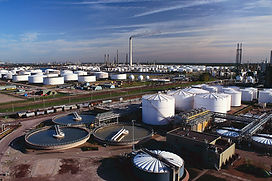
Özlem Academy Education Consultancy Inc.
CONTACT US FOR YOUR QUESTIONS
Address : Tatlısu Mah. Pakdil Sok. PERSPECTIVE Plaza No:5 Floor:1 Flat:3, Şerifali Cd., 34774 Umraniye/Istanbul
Tel Office: +90 (216) 594 55 25
Mobile: +90 (533) 380 83 72


Our services
SECURITY MANAGEMENT SYSTEM (SMS) PREPARATION AND AUDIT SERVICE
With our expert staff, we offer the highest quality Security Management System (SMS) preparation service.
You can entrust your "Security Management System (GYS)" studies within the scope of Seveso Directive to us!
In addition, with our DCMR Seveso auditor certified team, process safety in the workplace and compliance with Seveso directive legislation are examined and consultancy services are provided to take necessary actions by performing GAP analysis.
We Provide Security Management System (GYS) Installation Service.
"We are Experts in Process Safety."
Under the SEVESO Directive We establish the Security Management System (GYS) elements, and we also audit them if you wish.
We provide inspection services with the drilling method inspection model. If the results obtained"SYSTEM DYNAMIC MODEL" approachWe model and measure performance with
A safety management system is used to document an organization's safety policies and practices for the purpose of preventing and mitigating major industrial accidents.
SMS elements;
A. Organization and Staff:
-
Organizational Structure of the Organization:An organizational chart is presented showing the organizational structure of the organization and the unit responsible for process safety. The duties of the personnel in this unit and the personnel to be appointed in case of their temporary absence are indicated.
-
Organization's Safety Culture:Describes methods of how to create and maintain a safety culture that engages all employees.
-
Training of Personnel in Charge:Information is given about the training received by the personnel involved in security and the subject and duration of these trainings.
-
Training Needs:It explains how the training needs of the employees are determined and how the trainings are planned and evaluated.
-
Follow-up of Security-Related Developments: Information is provided on how security developments are tracked and evaluated.
-
Security Information Exchange:Information is given about systems that provide cooperation and information exchange with emergency service units and other organizations.
-
Subcontractor Management:Regulations on the selection, management, coordination and supervision of subcontractors are explained.
B. Identification and Evaluation of Major Accident Hazards:
-
Methodology: Information is provided on methods for identifying and assessing major accident hazards.
-
Data Sources:Information is given about the data sources used for the identification and evaluation of hazards.
C. Operational Control:
-
Commissioning of the Facility: Information is provided about the stages of commissioning new facilities, control methods and the team.
-
Operation of Plant and Processes:Information is given about control and alarm systems, maintenance policy, work instructions and work permit systems.
-
Decommissioning of Process Equipment:Information is provided about the decommissioning process of equipment and safety precautions.
D. Management of Change:
-
Critical Changes:Information is given about the criteria for determining critical changes.
-
Content of Critical Changes: The types of critical changes and the management processes for these changes are explained.
-
Hazards Due to Change: Information is provided on the hazards that changes can cause and how these hazards are addressed.
-
Saving Changes and Updating Documentation:The process of recording the changes and updating the relevant documents is explained.
-
Informing the Employees:Information is provided on how employees are informed and trained about the changes.
E. Planning for Emergencies:
-
Information on the criteria for determining emergencies and organizational planning is presented.
F. Monitoring Performance:
-
Information is given about determining the objectives of the safety management system, monitoring and evaluating the performance.
G. Audit and Review:
-
Information is provided on the internal audit process, responsibilities, audit methods and reporting to be carried out at regular intervals.
This information provides an important guide for establishing and documenting an organization's security management system. Safety reports contain this type of information, helping organizations increase their safety and prevent major industrial accidents.
Also, if you want, it audits the Security Management System and checks the We provide consultancy services to fix it.
In the report we will prepare at the end of our audits, besides the current situation determinations, special suggestions will be made for your company for improvements. In this way, both legal obligations will be fulfilled and you will have created a safe working environment for all your personnel.
Please review the Article and Blog section in order to have a detailed idea about our process safety and GYS audit studies.

Employer's Obligation to Take Action
Regulation on Preventing Major Industrial Accidents and Reducing Their Effects
Article 6:
General Obligation of the Operator
The operator is obliged to take all necessary measures to prevent major accidents and, in cases where they cannot be prevented, to limit their effects in a way that causes the least damage to the environment and people.









